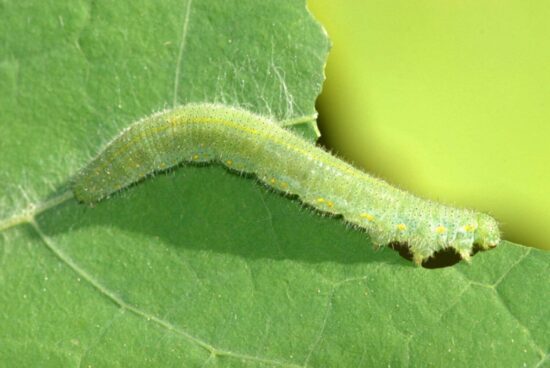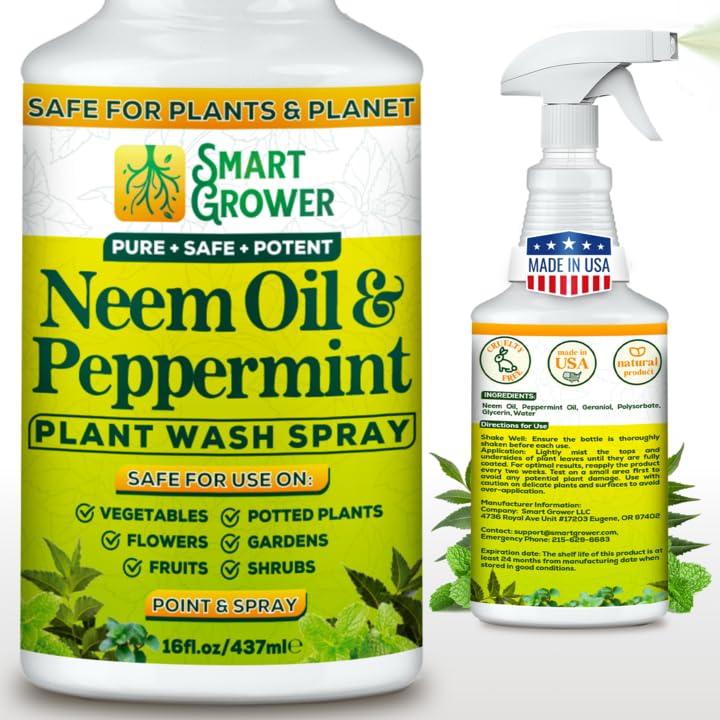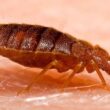Nothing ruins a beautiful garden faster than hungry caterpillars chomping through your plants. These little green eating machines can turn healthy leaves into swiss cheese overnight, leaving gardeners scratching their heads about what to do next.
The good news is that getting rid of caterpillars doesn’t have to mean using harsh chemicals. There are plenty of natural ways to protect your plants while keeping your garden safe for family and pets. The key is catching the problem early and using the right combination of methods.
Some caterpillars turn into beautiful butterflies that help pollinate your garden, so it’s important to know which ones to remove and which ones to keep. This guide will show you exactly how to get rid of caterpillars that damage your plants while protecting the beneficial ones.
1. Pick Them Off by Hand
The simplest way to handle small caterpillar problems is to grab them yourself. This old school method works great when you only have a few caterpillars and can easily spot them on your plants.
Put on a pair of garden gloves and take a close look at your plants. Check the tops and bottoms of leaves, especially in the morning or evening when caterpillars are most active. Look for the telltale signs: holes in leaves, chewed edges, or small dark droppings.
Once you find the caterpillars, carefully pick them off and drop them into a bucket of soapy water. This kills them quickly and humanely. You can also relocate them to a wild area away from your garden where they won’t cause problems.
Make this more effective by checking your plants every day. Use a flashlight for evening inspections since many caterpillars feed at night. This method works especially well for large, easy to spot pests like hornworms and tent caterpillars.
2. Spray with Bacillus Thuringiensis (Bt)
Bt spray is the gold standard for getting rid of caterpillars naturally. This special bacteria only affects caterpillars and won’t harm people, pets, birds, or helpful insects like bees.
When caterpillars eat leaves treated with Bt, the bacteria disrupts their digestive system and they stop eating within a few days. It’s completely safe for everything else in your garden, making it perfect for organic gardening.
Apply Bt spray in the evening when caterpillars are most active. Make sure to coat both sides of the leaves thoroughly. The spray works best on young caterpillars, so start treatment as soon as you notice the first signs of damage.
You’ll need to reapply after rain or heavy watering since Bt breaks down in sunlight and water. Look for products like Dipel, Thuricide, or Monterey Bt at your local garden center. Follow the label directions for mixing and application rates.
3. Use Neem Oil Treatment
- Natural pest control spray safe for indoor and outdoor plants
- Combines neem oil and peppermint for extra plant protection
- Helps prevent pests like spider mites, gnats, and mealy bugs
- Easy to use spray bottle with pleasant peppermint scent
Neem oil comes from the seeds of the neem tree and works great for controlling small caterpillars. It suffocates them and messes up their growth cycle, making it harder for them to develop properly.
Mix two teaspoons of neem oil with one liter of water and a few drops of dish soap to help it stick to leaves. Spray this mixture on your plants once a week, making sure to cover the undersides of leaves where caterpillars like to hide.
The best time to apply neem oil is in the evening or on cloudy days to prevent leaf burn. This treatment also helps control other pests like aphids and spider mites, giving you extra bang for your buck.
Keep in mind that neem oil can affect beneficial insects if they come into direct contact with it while it’s wet. Apply it when bees and other helpful bugs are less active to minimize any problems.
4. Make Homemade Pepper Spray
A spicy pepper spray can send caterpillars packing without using store bought chemicals. This natural repellent works by making your plants taste terrible to hungry caterpillars.
To make pepper spray, you’ll need half a cup of finely chopped habanero peppers, six crushed garlic cloves, one teaspoon of dish soap, one tablespoon of vegetable oil, and two cups of water. Blend everything together and let it sit for 24 to 48 hours.
Strain the mixture through a fine mesh or cheesecloth before putting it in a spray bottle. Always wear gloves and eye protection when making and applying this spray since it can irritate your skin and eyes.
Spray your plants early in the morning or evening to avoid burning the leaves in the hot sun. Test the spray on a small area first to make sure your plants can handle it. Reapply after rain or every week during peak caterpillar season.
5. Apply Vinegar Based Natural Spray
A simple vinegar spray can kill and repel caterpillars on contact. This cheap and easy solution uses ingredients you probably already have in your kitchen.
Mix two tablespoons of white vinegar with one gallon of water in a spray bottle. Spray this solution directly on caterpillars and on areas where you’ve seen damage. The acid in vinegar kills caterpillars quickly and helps prevent new ones from settling in.
This method works best as a spot treatment when you can see the caterpillars. Spray them directly for the fastest results. You can also spray around the base of plants to create a barrier that caterpillars don’t want to cross.
Reapply the vinegar spray after rain or watering. Be careful not to overdo it, as too much vinegar can change the soil pH around your plants. Stick to the recommended mixing ratio for best results.
6. Try Soapy Water Solution
A gentle soapy water spray creates a slippery surface that caterpillars can’t navigate. This simple method won’t harm your plants but makes life difficult for unwanted pests.
Mix two tablespoons of organic liquid soap with one liter of water. Spray this solution on your plants, paying special attention to areas where you’ve seen caterpillar damage. The soap film makes it hard for caterpillars to grip leaves and move around.
When caterpillars fall off soapy plants, they often land in the soapy water below and drown. This gives you a double benefit: preventing feeding damage and eliminating the pests at the same time.
This method is completely safe for people and pets, making it perfect for vegetable gardens. Apply the soapy water in the evening when temperatures are cooler to prevent any leaf damage from the soap.
7. Install Physical Barriers and Row Covers
Sometimes the best defense is a good offense. Physical barriers stop adult moths and butterflies from laying eggs on your plants in the first place, preventing caterpillar problems before they start.
Cover your plants with fine mesh netting or floating row covers. Make sure the fabric doesn’t touch the plant leaves, as adult insects can lay eggs right through the material. Secure the edges with rocks, soil, or clips to prevent gaps.
Install barriers before pest season begins for the best protection. This timing is especially important for crops like cabbage and broccoli that are favorite targets for caterpillars.
Remember to remove covers during flowering if your plants need pollinators like bees. You can also choose wind pollinated crops like corn and beans that don’t need the covers removed.
8. Use Companion Planting for Natural Repelling
Certain plants naturally repel caterpillars with their strong scents. Planting these around your garden creates a natural barrier that keeps egg laying moths and butterflies away from your vegetables.
Herbs like peppermint, lavender, sage, rosemary, and thyme all have powerful scents that caterpillars avoid. Plant these around the edges of your garden or mix them in between your vegetable rows.
For specific problems, try these combinations: plant thyme or oregano near cabbage family plants to repel cabbage white butterflies, or use hyssop around broccoli and cauliflower. Peppermint works well as a general deterrent around the whole garden.
These companion plants do double duty by repelling pests and attracting beneficial insects that eat caterpillars. Many of these herbs also have culinary uses, giving you fresh ingredients for cooking.
9. Attract Beneficial Predators and Parasites
Nature provides its own pest control in the form of helpful insects and birds that love to eat caterpillars. Encouraging these natural enemies to visit your garden creates long term caterpillar control.
Parasitic wasps lay their eggs inside caterpillars, and their babies eat the caterpillars from the inside out. Ground beetles hunt caterpillars at night, while birds like chickadees and nuthatches pick them off during the day.
Plant flowers that attract these beneficial insects. Good choices include yarrow, dill, cosmos, marigold, and fennel. These plants provide nectar for adult beneficial insects while their larvae hunt caterpillars.
Set up bird houses and provide water sources to encourage insect eating birds. Avoid using broad spectrum pesticides that can harm these natural allies. A healthy population of beneficial insects can keep caterpillar problems under control without any effort on your part.
10. Remove Egg Masses and Webbed Nests
Stopping caterpillars before they hatch is one of the most effective ways to prevent damage. Many moths and butterflies lay distinctive egg masses that are easy to spot and remove.
Check your plants regularly for clusters of small, round eggs on the undersides of leaves. These often look like tiny pearls or grains of rice. Scrape them off with your fingernail or cut off the affected leaves entirely.
Tent caterpillars create obvious webbed nests in tree branches. Remove these nests as soon as you spot them, before the caterpillars spread out and become harder to control. Use pruning shears to cut off the entire branch if necessary.
Look for eggs and nests during the times when adult moths and butterflies are most active in your area. This varies by location and species, but spring and early summer are common times for many pests.
11. Create Cardboard and Foil Barriers
Simple materials like cardboard and aluminum foil can create effective barriers around individual plants. These create uncomfortable surfaces that caterpillars don’t want to crawl over.
Cut cardboard into strips and wrap them around the base of plants like a collar. This works especially well for protecting seedlings from cutworms that attack at ground level. Replace the cardboard when it gets soggy or damaged.
Aluminum foil works similarly and lasts longer than cardboard. Wrap it around plant stems or lay strips on the ground around plants. The shiny surface also reflects light up onto plant leaves, which can help with growth.
Copper tape provides another option that many gardeners swear by. The metal gives caterpillars a small electric shock when they try to crawl over it, sending them looking for easier targets.
12. Apply Diatomaceous Earth (Food Grade)
Diatomaceous earth is made from tiny fossilized algae that feel like powder to us but are razor sharp to small insects. When caterpillars crawl over it, the sharp particles damage their soft bodies.
Only use food grade diatomaceous earth in your garden. The pool grade version contains chemicals that can harm plants and animals. Dust it around the base of plants and lightly on leaves where caterpillars feed.
Apply diatomaceous earth when plants are dry, and reapply after rain or watering. The powder needs to stay dry to work effectively. Wear a dust mask when applying to avoid breathing in the fine particles.
This method works best on smaller caterpillars and those that spend time crawling on the ground. It’s less effective on large caterpillars that can power through the barrier.
13. Deploy Beneficial Nematodes
Beneficial nematodes are microscopic worms that hunt down and kill caterpillars in the soil. They’re completely safe for people, pets, and plants but deadly to many garden pests.
Look for Steinernema carpocapsae, which specifically targets caterpillars. Mix the nematodes with water according to package directions and spray the solution on your plants and soil.
Apply nematodes during cool, damp conditions for the best results. They need moisture to survive and work best when temperatures are between 60 and 80 degrees. Evening application often works better than midday.
Don’t expect instant results with nematodes. It takes one to two weeks to see the full effect as the nematodes find and attack the caterpillars. This method provides long term control rather than quick fixes.
14. Use Molasses and Garlic Spray
This Australian gardening trick combines molasses and garlic to create a spray that caterpillars hate. The sweet and spicy combination confuses their senses and makes plants less appealing.
Mix one tablespoon of molasses with one teaspoon of dish soap and one liter of warm water. Add crushed garlic cloves for extra repelling power. Let the mixture sit for a few hours before straining and spraying.
Apply this spray regularly to keep caterpillars away from your plants. The molasses also feeds beneficial soil bacteria, giving your plants an extra boost while protecting them from pests.
This method works particularly well in areas with fire ants, as the molasses also helps repel these aggressive insects. Many gardeners report good results with this simple, natural spray.
15. Create Trap Crops and Decoy Gardens
Sometimes the best way to protect your main garden is to give caterpillars something else to eat. Trap crops attract pests away from your valuable plants to areas where you can control them more easily.
Plant nasturtiums, radishes, or other preferred host plants away from your main vegetable garden. Caterpillars will often choose these over your prized tomatoes and peppers.
Check your trap crops regularly and remove caterpillars by hand or with approved sprays. This concentrates the pests in one area where getting rid of caterpillars becomes much easier.
Consider creating a separate butterfly garden with native plants that support beneficial butterfly species. This gives the good caterpillars a place to develop while keeping them away from your vegetables.



